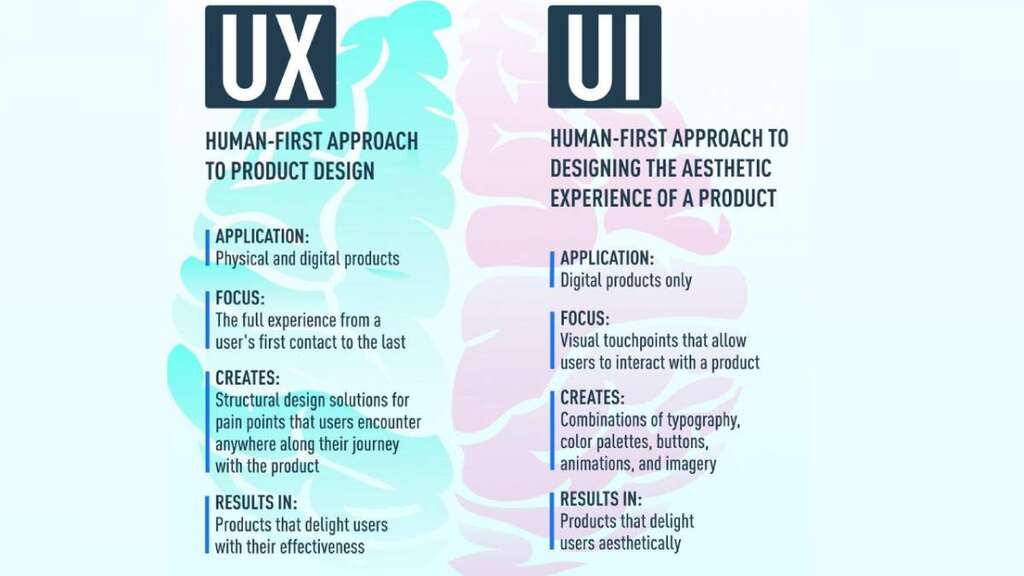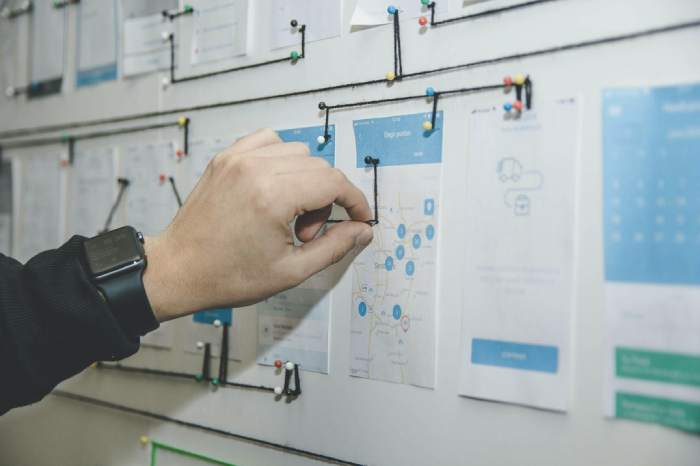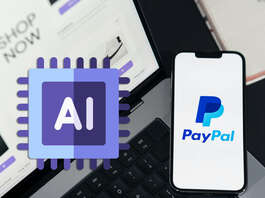User experience (UX) refers to the user’s overall interaction and satisfaction when interacting with a product, service, or system. It includes all aspects of user interaction, including usability, accessibility, aesthetics, and overall experience.
Importance of user experience in design
User experience is an integral part of design because it directly influences how users perceive and interact with a product.
Positive UI UX design services improve user satisfaction, loyalty, and trust, while poor UX can lead to frustration, dissatisfaction, and ultimately loss of users.
Designing with a focus on user experience ensures that products are efficient and easy to use.
Evolution of user experience
The field of User Experience has evolved, adapting to technological advances and the changing needs of users. Initially, UX was primarily associated with usability, but it has expanded to include emotional and aesthetic aspects now.
As technology advances, so does the complexity of designing user-friendly interfaces and experiences. In the B2B context, where transactions and interactions can be complex, user experience plays a critical role in driving adoption and user satisfaction.
That is why companies now consider not only functionality and usability but also the overall user experience, including emotional and aesthetic elements when choosing. B2B commerce platforms.
UX Design Fundamentals
The history of UX design dates back to the early days of human-computer interaction, a time when there was no AI writer to help generate text or create content. The concept became familiar with the advent of personal computers in the 1980s.
The first efforts focused on improving the usability of the interfaces. Over the years, UX design has combined insights from psychology, cognitive science, and other fields to create simpler, user-centered approaches.
Basic principles of an effective user experience
- Usability: The product or system must be easy to use, allowing users to achieve their goals with efficiency and minimal frustration.
- Accessibility: The design must be available to users of all abilities, ensuring that the product is usable by people with disabilities.
- Consistency: Maintain a consistent design throughout the product to create a predictable and familiar user experience.
- Clarity: Communicate information, features, and feedback to users, minimizing confusion and misunderstandings. Use trusted communication channels, including cloud phones and real-time messaging platforms, to ensure clear and effective information exchange.
- Feedback and response time: Provide timely feedback on users’ actions, helping them understand the system’s response and reducing uncertainty.
- Aesthetics: Consider the visual design and overall user interface to create an attractive and engaging user experience.
- User-centered design: Involve users in the design process, understanding their needs, preferences, and behaviors to create a more user-centered product.
- By sticking to these core principles, UX designers can create products that meet user needs and exceed expectations in terms of usability and overall satisfaction.
Emerging trends in UX design
Integration of Augmented Reality (AR) and Virtual Reality (VR)
UX design development extends to the integration of Augmented Reality (AR) and Virtual Reality (VR), providing users with a wide range of interactive experiences.
AR and VR technologies can perfectly enhance user engagement by combining the digital and physical worlds.
3D designs
3D elements are increasingly used in the design industry. Incorporating 3D designs adds depth and realism to user interfaces, creating visually engaging experiences.
A unique application of this trend is evident in the rise of 3D logo animation, where brands leverage dynamic images to enhance their identity.
Inclusive design and accessibility
As UX design evolves, there is a growing focus on inclusive design and accessibility.
The designers aim to create interfaces that are accessible to a wide range of users, ensuring that everyone, regardless of their abilities or disabilities, can seamlessly access and navigate the website.
AI-generated content
The integration of AI-generated content is revolutionizing the way information is presented and consumed.
UI UX design services now have the option to create dynamic, personalized content, whether for websites, apps, or even advertising. This includes the ability to create ads that adapt to user preferences and behaviors.
Dark mode
Dark mode has gone viral as a user interface option, giving users a visually comfortable and aesthetically pleasing experience.
This trend is not only aesthetically pleasing but also helps reduce eye strain, especially during prolonged periods of device use.
Advanced Cursor Interactions
Innovations in cursor interactions are improving user engagement and navigation. Advanced cursor interactions go beyond traditional mouse movements and incorporate gestures and feedback elements to create a more intuitive user experience.
By incorporating these trends, UX designers can stay abreast of industry advancements, creating experiences that are not only visually appealing but also highly functional and inclusive.
Cross-platform user experiences
Design consistent experiences across devices
Creating a seamless and consistent user experience across devices has become a central goal. Designing cohesive experiences requires a structured approach to ensure that users can effortlessly navigate between devices while maintaining fluid interaction.
Consistency is crucial to shaping a positive and memorable user experience (UX). Many elements that shape coherence are fundamental parts that contribute to the overall cohesion and effectiveness of a design.
Why is consistency so important?
Recognition and familiarity:
Consistency in design ensures that users experience a familiar interface across multiple landing pages. This recognition helps generate a sense of familiarity, making users feel comfortable navigating different sections of a product or website.
Easy to use:
Consistent design patterns and interactions make it easier for users to understand how to navigate and interact with a product. When users are faced with a similar layout or flow, they can anticipate the placement of elements, which reduces cognitive load and improves usability.
Building trust:
Consistency in design allows for a feeling of reliability and professionalism. Users are more likely to trust a product or service that maintains a consistent appearance, as it involves attention to detail and a commitment to quality.
Brand recognition on all platforms:
In the era of cross-platform experiences, it is essential to maintain a consistent UX across multiple devices and channels. Users should make a seamless transition from a website to a mobile app, for example, without experiencing a sudden change in design.
Improved User Engagement:
A consistent, well-branded UX helps improve user engagement. When users have positive, predictable interactions with a product, they are more likely to spend time exploring its features and functionality.
A strong brand creates an emotional connection with users. A brand that consistently communicates its values and personality through its UX design can evoke positive emotions, leading to greater user loyalty and advocacy.
When it comes to online branding, particularly on Instagram, it becomes essential to not only maintain a cohesive brand identity but also actively manage Instagram accounts, engage with the audience effectively, and amplify the emotional resonance established through UX design.
Maintaining consistency in design and integrating strong brand elements is not just about aesthetics; it is a strategic approach to creating a consistent and memorable user experience.
By doing so, designers can build trust, foster brand loyalty, and ultimately contribute to the success of a product or service in the competitive arena.
Interactive Design
Responsive design remains essential, ensuring that digital interfaces adapt seamlessly to various screen sizes and devices. This approach remains crucial to providing a consistent, user-friendly experience across different platforms.
Challenges and strategies
Overcoming the challenges of cross-platform UX design involves addressing variations in screen sizes, operating systems, and input methods. Strategies include:
Adopt responsive design principles.
Using responsive designs.
Prioritize content hierarchy to optimize user experience regardless of device.
Strategies to improve user engagement
- Microinteractions
- Microinteractions, subtle but meaningful design details, play a crucial role in improving user engagement.
- These small interactions contribute to a positive user experience by providing feedback, guiding users through processes, and adding an element of fun to the overall interaction.
- Gamification and Interactive Elements
- Incorporating gamification principles and interactive elements can significantly boost user engagement.
- Gamified elements, such as rewards, challenges, and progress tracking, create a more immersive and enjoyable experience, encouraging users to interact with the platform and allowing a sense of achievement.
User-centered design thinking
User-centered design thinking involves empathizing with users, defining their needs, proposing solutions, prototyping, and testing.
This approach puts the user at the center of the design process, ensuring that products and experiences meet their expectations and address real-world challenges.
Incorporating feedback for continuous improvement
To achieve continuous improvement, integrating feedback into the design process is essential.
Regularly collecting user feedback through surveys, usability testing, and analytics allows designers to identify areas for improvement and refine their solutions based on real user experiences.
UX in Emerging Technologies
The impact of AI and machine learning on UX
As technology advances, the integration of artificial intelligence (AI) and machine learning (ML) is reshaping the user experience landscape.
AI improves personalization, automates decision-making processes, and adapts interfaces based on user behavior. Understanding the impact of these technologies is crucial to designing intuitive user experiences.
Integrating UX design into Internet of Things (IoT) products
The Internet of Things (IoT) brings something new to UX design, where connected devices and smart ecosystems demand careful consideration. Designing for IoT involves:
Creating fluid interactions between devices.
Prioritizing user control and privacy.
Ensure a consistent user experience across a network of interconnected products.
This integration requires a special focus on UX design to address the unique challenges that IoT poses.
The evolution of UX design has been on a fascinating journey, from its early roots in human-computer interaction to the current era of AI, machine learning, and IoT.
In the changing field of UX design, staying up to date on trends and technologies is essential. Key takeaways for UX designers in 2024 include embracing AI and machine learning, adapting to challenges and opportunities, and maintaining a strong commitment to user-centered design principles.
Have you ever stopped to ask yourself: “What do the terms UX and UI mean?” Believe it or not, even people who deal with design daily can confuse the two. As UXPlaneta explains it: “ User experience and user interface are some of the most confusing and misused terms in the field.”
This is not a secret language that you cannot get information about. Phrases like “great UX” and “bad UI” of a design are not jargon that others use. They are used to describe the two most important things that make a website a success or a failure.
If you want to know what the two mean and how they differ, you’ve come to the right place.
Definition of UX and UI
Let’s start by defining what these two terms mean.
UI, or user interface, is anything that users interact with when using a design, digital product, or service. This term captures everything from sounds, lights, screens, keyboards, and behaviors.
To understand it better, we should go back to when it all started.
In the 1970s, people used a command line interface when using a computer. It all started with the programming language and those confusing lines of code, necessary to complete the simplest tasks we do with ease today. Shortly after this, a new invention changed technology completely: the first graphical user interface. From this point on, people could interact with computers through the use of icons, menus, and buttons. This certainly made things easier.
It was at that time that the computer revolution began. Since then, designers have dedicated all their efforts to creating interfaces with the user in mind. If they didn’t do this, their products wouldn’t sell.
Now that the world of technology has advanced beyond anyone’s predictions in the past, the role of the user interface designer is more widespread and demanding. They also have incredible opportunities to create unique designs and make use of modern technology to improve the interface.
However, they could never achieve success without a good user experience.
Maze, a leader in user testing and a popular tool among designers has created an excellent guide on User Interface Design. In this guide, they present a pretty refreshing explanation of the difference between UI and UX: “If you were designing a house, UX would be the foundation, while I would be the paint and furniture.” Fortunately, it’s tools like these that make UX and UI design easier for experts.
So what is UX?
UX, or user experience, has evolved along with improvements to the user interface. It’s how people feel about interactions with technology, whether positive, neutral, or negative. Naturally, designs that provide users with a quality experience are considered successful.
The term user experience dates back to the 1990s when Don Norman, a cognitive scientist employed by Apple at the time, defined it as follows:
“‘User experience’ encompasses all aspects of end users’ interaction with the company, its services, and its products.”
This is now considered a comprehensive definition, but it captures everything that UX does because it does so much for design. Any experience people have with the design of a product or service, whether digital or otherwise, falls under this term.
In other words, UX is about:
How your users discover the product/service
What actions do they take while interacting with your interface
How they feel and what they think during that time
Impressions they take once the interaction is complete
The role of a UX Designer is to ensure that the design meets the needs of consumers and that they achieve the desired result most simply and seamlessly.
UX and UI cannot thrive without each other, so understanding the difference between the two is essential for designers.
The difference between UI and UX
At a basic level, the user interface includes all the elements that allow people to interact with the service or product in question. UX, at a basic level, is what that same user takes away from the experience. Both have a huge effect on user behavior and the future of design.
CareerFoundry visual on this is quite illuminating:

Let’s take a simple example to describe all this. We all know and love Google – it’s the place we go to get our information. The founders of this search engine knew exactly what to do: create a simple place where people can get what they need. Almost anything you need to know, you can get the information in the blink of an eye with this engine.
However, what if getting that information takes too long every time you try to learn something? If it took you, say, 20 seconds to get your results, would you be willing to keep searching?
Google has a fairly direct and simple interface, which is what makes it so desired by users looking for information. It’s as simple as it sounds: you open it, type in what you need, and click search. But, if the interface remained like this, but took too long to obtain the information, the user experience would be worse.
According to this Medium article and the words of Miller, a web developer, “The user interface is the saddle, the stirrups and the reins. UX is the feeling of being able to ride a horse.”
So, these two terms may not be the same, but they go hand in hand. Neither exists without the other. It would help if you had UX, and vice versa. This is why a great designer possesses both UX and UI skills, even if he focuses on only one.
How the two work together
Now that you know how they differ, it’s time to learn how to use both to achieve your goals.
This begins with the work of the UX designer. The designer considers the user journey from start to finish. He thinks about the steps users take to solve a particular problem, what tasks they will be asked to complete, and how they feel and behave while doing all this.
Most of the time, UX designers with the help of a professional agency like RCCO explore and define the pain points that users face and try to find the best strategies to improve their experience. All of this is based on extensive user research that defines the target audience, the behavior of current and former users, and predictions on how to make them happier with the design.
Once this is done, the UX designer maps out the user’s journey through the product, considering the information architecture, features, etc.
When the entire skeleton is mapped, the task of the user interface designer begins. His job is to bring all this to life and make it accessible to the user. Without UI, users will not be able to enjoy the experience that the UX designer prepared for them.
UI designers take into consideration the data collected by the UX designer to create the interface. They will include the individual touchpoints and screens that users will encounter, consider the best option for providing the information, and focus on other details that make the journey possible.
Many ask the question: “Which is more important”?
The answer is none. Both are very crucial in the design process. If the design looks good but is difficult to use, your UX is poor and your UI is great. When the design is usable, but looks devastating, the opposite is true. Neither of these situations is good.
Even if a product works with only one of these elements optimized, imagine this: how good would it be if you optimized both?
A common element: UI and UX design research
Both UI and UX design are based on one thing: research. This is an invaluable step for both and is what determines the success of the product. For a product to be successful, UX and UI experts must collect tons of accurate information. This information will tell them what the user wants or expects from the product, as well as how they want it.
Research, including analysis and testing with tools like Maze, provides invaluable insights into user expectations and needs. Based on this, designers can make informed and safer decisions.
How do UX experts research?
Some of the methods used to collect the necessary information include user or target person research, conducting user interviews and surveys, or using focus groups to collect information.
And what about the research of UI designers?
UI designers will work closely with UX experts to verify research results, learn more about the audience, and make informed decisions about fonts, colors, visual elements, patterns, and more.

Final Considerations:
Hopefully, at this point, you understand the strong line between UI and UX design services. They are different although they go hand in hand and are important for the product. Whatever you choose to pursue, you should gather as much knowledge as possible about each other and collaborate with other designers to achieve the best results.






